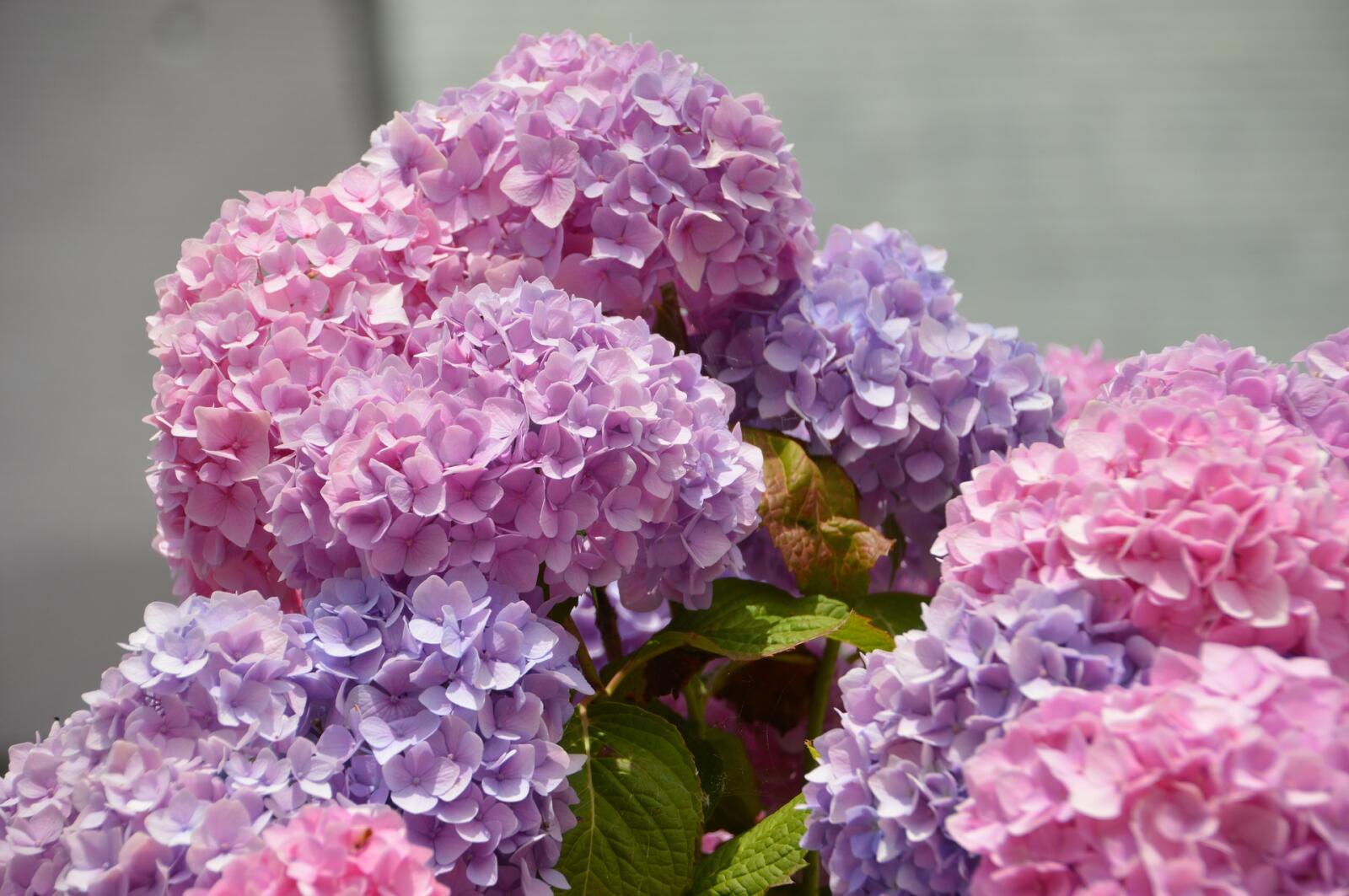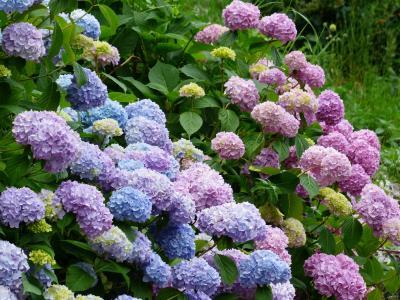July 12, 2018

hydrangeas, flower, gardening
Hydrangea Magic: Changing Colours
Hydrangeas are one of the best plants to grow in Ontario for so many reasons. Hydrangeas are easy to grow and care for and they typically do well in shady spots although some of the newer varieties are full sun plants. The flowers have always been special as they are big and showy –  and now we have some new varieties that repeat bloom. Overall a great collection of plants.
and now we have some new varieties that repeat bloom. Overall a great collection of plants.
But we like hydrangeas for their science side too…as each plant is a mini chemistry lab waiting to happen. This is the time of year that we get the “how do I make it blue” or “how do I make it pink” question on hydrangea – and that leads us down the chem lab lane.
So – yes you can change the colour of most (but not all) hydrangeas. The two most popular varieties (or cultivars) for colour changes are H. macrophylla and H. serrate – which typically have the big round ball shaped flowers. We love some of the new full sun types like ‘Limelight’ – but ‘Limelight’ is an example of a cone shaped Hydrangea paniculata which you cannot change.
Next step is to fuss at your soil pH. Soil pH is the measure of how acid or alkaline your soil is. A neutral soil is a pH around 6. You can have your soil tested by a lab, or buy a test kit – or easier still is call us at the garden centre as your soil will be like all the neighbours.
For blue we want a low pH – below 6 – and for pink we want a high pH above 6.
In the case of a blue flower we are trying to get the flower absorb more aluminum in the soil and in the case of a pink flower we are trying to have the plant not pick up any aluminum. By fiddling with the soil pH we change how available aluminum is for the plant – low pH or acidic soils make aluminum easy for the hydrangea to work with while a alkaline soil or high pH prevents the plant from taking in aluminum – hence the different colours.
It is much easier to change a hydrangea from pink to blue than it is from blue to pink. Changing a hydrangea from pink to blue entails adding aluminum to the soil. Changing from blue to pink means subtracting aluminum from the soil or taking it out of reach of the hydrangea.
To make a PINK flower – we want more alkaline soil – or a higher pH – so we typically add lime to the soil. Add dolomitic lime several times a year. This will help to raise the pH. Aim for a pH of about 6.0 to 6.2 (If it goes above 6.4 hydrangeas may experience an iron deficiency).
Another trick is to use a fertilizer with high levels of phosphorus. Phosphorus helps to prevent aluminum from creeping into the system of the hydrangea. Choose a fertilizer close to the ratio of 15/30/15.
To make a BLUE flower – we want a more acidic soil – or lower pH. You can lower the pH of a soil by adding peat moss – which is slightly acidic. You can also use up old coffee grounds or citrus peels to help lower the pH. Another way to help a flower be blue is to add chemicals - Authorities recommend that a solution of 1 Tbsp. aluminum sulfate per 4 liters of water be applied to plants (which are at least 2-3 years old) throughout the growing season. Important: Water plants well in advance of application and put solution on cautiously, as too much can burn the roots.
A trick to consider - in areas that naturally produce blue hydrangeas (soils with aluminum), consider growing pink hydrangeas in large pots. If hydrangeas are grown in pots, it would be best to use soil-less mixtures, since these mixes would probably not have aluminum in them. In a pot, it will be much easier to control the requirements for growing pink hydrangeas.
Colour changing in hydrangeas should be a fun game – you can use it to teach the small ones some science – as well as how much fun gardening can be. Find everything you need for stunning garden at your Landscape Ontario member garden centre. Locate members close to your home here.
 and now we have some new varieties that repeat bloom. Overall a great collection of plants.
and now we have some new varieties that repeat bloom. Overall a great collection of plants.But we like hydrangeas for their science side too…as each plant is a mini chemistry lab waiting to happen. This is the time of year that we get the “how do I make it blue” or “how do I make it pink” question on hydrangea – and that leads us down the chem lab lane.
So – yes you can change the colour of most (but not all) hydrangeas. The two most popular varieties (or cultivars) for colour changes are H. macrophylla and H. serrate – which typically have the big round ball shaped flowers. We love some of the new full sun types like ‘Limelight’ – but ‘Limelight’ is an example of a cone shaped Hydrangea paniculata which you cannot change.
Next step is to fuss at your soil pH. Soil pH is the measure of how acid or alkaline your soil is. A neutral soil is a pH around 6. You can have your soil tested by a lab, or buy a test kit – or easier still is call us at the garden centre as your soil will be like all the neighbours.
For blue we want a low pH – below 6 – and for pink we want a high pH above 6.
In the case of a blue flower we are trying to get the flower absorb more aluminum in the soil and in the case of a pink flower we are trying to have the plant not pick up any aluminum. By fiddling with the soil pH we change how available aluminum is for the plant – low pH or acidic soils make aluminum easy for the hydrangea to work with while a alkaline soil or high pH prevents the plant from taking in aluminum – hence the different colours.
It is much easier to change a hydrangea from pink to blue than it is from blue to pink. Changing a hydrangea from pink to blue entails adding aluminum to the soil. Changing from blue to pink means subtracting aluminum from the soil or taking it out of reach of the hydrangea.
To make a PINK flower – we want more alkaline soil – or a higher pH – so we typically add lime to the soil. Add dolomitic lime several times a year. This will help to raise the pH. Aim for a pH of about 6.0 to 6.2 (If it goes above 6.4 hydrangeas may experience an iron deficiency).
Another trick is to use a fertilizer with high levels of phosphorus. Phosphorus helps to prevent aluminum from creeping into the system of the hydrangea. Choose a fertilizer close to the ratio of 15/30/15.
To make a BLUE flower – we want a more acidic soil – or lower pH. You can lower the pH of a soil by adding peat moss – which is slightly acidic. You can also use up old coffee grounds or citrus peels to help lower the pH. Another way to help a flower be blue is to add chemicals - Authorities recommend that a solution of 1 Tbsp. aluminum sulfate per 4 liters of water be applied to plants (which are at least 2-3 years old) throughout the growing season. Important: Water plants well in advance of application and put solution on cautiously, as too much can burn the roots.
A trick to consider - in areas that naturally produce blue hydrangeas (soils with aluminum), consider growing pink hydrangeas in large pots. If hydrangeas are grown in pots, it would be best to use soil-less mixtures, since these mixes would probably not have aluminum in them. In a pot, it will be much easier to control the requirements for growing pink hydrangeas.
Colour changing in hydrangeas should be a fun game – you can use it to teach the small ones some science – as well as how much fun gardening can be. Find everything you need for stunning garden at your Landscape Ontario member garden centre. Locate members close to your home here.